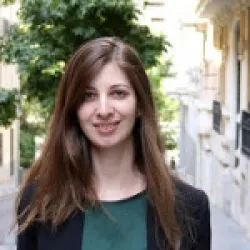Good Practice in Banknote and Currency Management 2022
Good Practice in Banknote and Currency Management
Good Practice in Banknote and Currency Management
March 14 – 17
Live Content sessions held: 8am–12pm (EST) | 1pm–5pm (GMT) | 9pm–1am (SGT)
Chair: Antti Heinonen, chairman, Banknote Ethics Initiative, and former director, banknotes, European Central Bank
What are the long-term lessons from the Covid-19 pandemic around cash demand – and usage? How are currency managers responding to the challenge of digital money? How can central banks improve the environmental, ethical and inclusive proposition of banknotes?
These are some of the main challenges facing currency experts at a time of technology-driven change in banknotes and central banking broadly. In response to the fast-paced evolution in digital payments they are increasingly using technology to improve the product and services they provide.
They know that better technology – as has always been the case with currency management – is the key to staying ahead of the competition.
This course is designed to equip central bankers to meet these challenges.
Each day will feature three hours of expert-led Live Content to maximise the opportunity to share and learn. The chair will ensure participants have opportunities to network throughout the course, with time set aside for a workshop on implementing key learnings.
Course agenda
Two weeks prior to your training course you will be emailed access to our content hub with course materials, including a trial to Central Banking if you are not already subscribed. There will be a combination of articles, reports and presentations that will contribute to two hours of preparation time for the live content. Presentations for the sessions will also be held here subject to the speaker approval.
Challenges, opportunities and threats
13:00 – 13:30
Course introduction
Course introduction session led by the chair
13:00 - 13:30
- Introductions and welcome from the chairperson
- Overview of the training course
- Discussion of the delegate expectations
Antti Heinonen has been the chairman of Banknote Ethics Initiative since its inception in 2013. He was the chairman of the Central Bank Counterfeit Deterrence Group between 2008 and 2012 and the Director, Banknotes at the ECB from 1998 until 2008. He chaired the Banknote Committee of the European System of Central Banks for more than 10 years and the Eurosystem Cash Changeover Co-ordination Committee in 2001 and 2002. Prior to joining the ECB he was the chief cashier for the Bank of Finland. He holds degrees in economics and mathematics from the University of Helsinki, and has recently written two books, one on the history of Finland’s markka banknotes, and another on euro banknotes. The latter is also translated in English (The First Euros) and German (Die Ersten Euros).
13:30 – 14:30
New challenges across the currency lifecycle
13:30 - 14:30
- The state of the art of currency management in 2022 (and lessons from 2021)
- New roles and responsibilities facing currency managers
- Key forces and dynamics shaping the currency lifecycle
- The impact and implications of disruptive technological innovation
Antti Heinonen has been the chairman of Banknote Ethics Initiative since its inception in 2013. He was the chairman of the Central Bank Counterfeit Deterrence Group between 2008 and 2012 and the Director, Banknotes at the ECB from 1998 until 2008. He chaired the Banknote Committee of the European System of Central Banks for more than 10 years and the Eurosystem Cash Changeover Co-ordination Committee in 2001 and 2002. Prior to joining the ECB he was the chief cashier for the Bank of Finland. He holds degrees in economics and mathematics from the University of Helsinki, and has recently written two books, one on the history of Finland’s markka banknotes, and another on euro banknotes. The latter is also translated in English (The First Euros) and German (Die Ersten Euros).
14:30 – 14:45
Break
14:30 - 14:45
14:45 – 15:45
Digital money: are CBDCs, stablecoins and crypto assets threats or opportunities?
14:45 - 15:45
- Overlaps and differences between privately issued crypto assets and CBDCs
- Understanding the impacts on central banks mandates and responsibilities
- Implications for central banks
- Discussion: How can currency managers harness technological innovation?
Aleksi Grym is head of fintech at the Bank of Finland. He leads a team that manages a portfolio of projects related to fintech, new payment technologies and digital currencies. He is a member of the Eurosystem's digital euro project steering group. Before joining the Finnish central bank he worked in the consulting and technology investment industry for 15 years in London and Helsinki.
15:45 – 16:15
Networking break
15:45 - 16:15
16:15 – 17:15
Case study: How has the currency department at the Bank of Israel addressed Covid-19?
16:15 - 17:15
- Assessment of cash demand pre and post Covid-19
- Examples of increase cash usage
- Long term impact of Covid-19 on cash demand
- Case study: steps taken by the Bank of Israel during Covid-19
Amir Safranovich has been with the Bank of Israel since 1997. Mr Safranovich has headed the Cash Management Division in the Currency Department of the Bank of Israel since 2003.
He is responsible for determining and implementing cash management policy in Israel and among other things, he is responsible for the supervision of cash centre, the regulation of the cash market, the contingency plan for cash, the banknotes quality standards, the reduction of counterfeits in circulation and the BOI cash centres operation.
Previous to this appointment, Mr Safranovich worked in the Banking Supervision Department in the Bank-Customer Relations Unit (1997-2003). He has a Master of Science degree in Economics from the Technion - Israel Institute of Technology, and an MBA from Bar Ilan University.
Good practice in the currency lifecycle
13:00 – 14:00
Substrate choice: security, acceptability, economy and longevity
13:00 - 14:00
- Overview of different substrate types
- The role of the substrate in a new series planning, design and introduction
- Frameworks and indicators for the evaluation of a new substrate
- Discussion: what do you expect from a banknote substrate?
Mr Rosbert Humphrey has been employed at the Eastern Caribbean Central Bank (ECCB) for the past twenty two (22) years, twenty one (21) of which have been in the Currency Management Department, where he is currently the Director. His main duties include Forecasting, Ordering and Monitoring of currency stocks, and general management of the Currency Management Department. He is a certified Banknote Forensic Expert Witness and a Trainer in the delivery of Expert Witness Training in the Eastern Caribbean countries. Rosbert has been a presenter and discussant at several banknote and currency seminars, workshops and training courses.
Rosbert is a native of St Vincent and the Grenadines, and holds a Bachelors of Science Degree in Economics and Accounting and a Masters of Science Degree in Finance.
14:00 – 14:15
Break
14:00 - 14:15
14:15 – 15:15
Currency management: a risk assessment
14:15 - 15:15
- Overview of risk management concepts
- Risks and incidents that can threaten the business continuity of cash and issue departments
- Risk assessment, contingency planning and crisis management
- Case studies for discussion
Antti Heinonen has been the chairman of Banknote Ethics Initiative since its inception in 2013. He was the chairman of the Central Bank Counterfeit Deterrence Group between 2008 and 2012 and the Director, Banknotes at the ECB from 1998 until 2008. He chaired the Banknote Committee of the European System of Central Banks for more than 10 years and the Eurosystem Cash Changeover Co-ordination Committee in 2001 and 2002. Prior to joining the ECB he was the chief cashier for the Bank of Finland. He holds degrees in economics and mathematics from the University of Helsinki, and has recently written two books, one on the history of Finland’s markka banknotes, and another on euro banknotes. The latter is also translated in English (The First Euros) and German (Die Ersten Euros).
15:15 – 15:30
Break
15:15 - 15:30
15:30 – 16:30
Cash circulation, distribution and destruction: what to outsource, when and how?
15:30 - 16:30
- Overview of logistical realities for circulation and distribution of cash
- Tips for innovation in cash processing functions
- Examples of successfully implemented cost saving strategies
- Discussion: what to outsource, when and how?
Leif Veggum joined Norges Bank in 1986 and has worked in the Cashier’s Department since 2000, becoming Director of the unit in 2017.
Leif has played a central part in the changes that Norges Bank implemented in the cash area in order to increase the overall efficiency in cash distribution. This included both redefining Norges Bank’s role and responsibilities, and reorganizing the services and tasks for which the central bank is responsible.
Prior to that, Leif served in Norges Bank’s Financial Markets Department and Payment Systems Department.
Technological foundations and threats
13:00 – 14:00
Anti-counterfeiting and education strategies - case study
13:00 - 14:00
- Key features of modern central bank cash management methods
- Innovative approaches to the selection of banknote security features: counterfeit analysis
- Tips for central banks to best equip citizens to identify and report counterfeits
- Case study: approaches to counterfeit deterrence
Octavia Gibson joined the Central Bank of Barbados on December 29, 1975. Between 1975 and 2005, she worked in several departments in the Bank including Foreign Exchange, Banking, Accounts, Currency, Bank Supervision, Internal Audit and the Projects Unit.
Between 1998 and 2004, she spearheaded the Y2K Project, the RTGS and ACH Projects for the Bank and the financial sector.
In 2007, she was seconded to set up the Barbados Deposit Insurance Corporation and managed that entity until the appointment of its first CEO.
As Deputy Director, Currency, having been appointed to that post in 2005, she has been leading the Currency Team in a number of firsts including:
• Exhibition of world currencies
• Development of a royalty programme for numismatic coins
• Changeover to different materials for our coins
• Introduction of a new banknote series
• The One Cent Charity Drive done in association with the Rotary Club of Barbados, South and the Alzheimer’s Association.
• Withdrawal of the one cent
• Revamping of the Know Your Money Programme
• Introduction of an APP to assist with the authentication of the 2013 Banknote Series
14:00 – 14:15
Break
14:00 - 14:15
14:15 – 15:15
Counterfeiting technology: what are the major threats?
14:15 - 15:15
- Overview of banknotes and security printing trends
- Practicalities faced in designing and issuing new notes
- The art of anti-counterfeiting: resilience testing and feature selection for future series
- Dealing with counterfeit notes: detection and impounding
Martin Münd was born in Mannheim, Germany in 1964. He started printing at the age of 12 in a voluntary workshop at school and went on to establish his own little print shop as a side business in the cellar of his parents‘ house. He studied printing technology at the “Fachhochschule für Druck” in Stuttgart, Germany and graduated as a printing engineer in 1995. For four years he was employed in the process engineering department of a major manufacturer of electric appliances as an expert on printing and marking technologies. In 1999 he followed his life long passion and fascination for banknotes by joining the counterfeit money department of Deutsche Bundesbank. In 2001 he moved on to the European Central Bank and has since been working at the ECB’s Counterfeit Analysis Centre (CAC) as an expert on counterfeit banknotes.
15:15 – 15:45
Networking break
An opportunity to share experiences with your fellow participants.
15:15 - 15:45
15:45 – 16:45
Engaging. Storytelling. Developing visual content for new bank notes
15:45 - 16:45
- Opportunity to reflect national culture, values and aspirations in bank note design.
- Engaging stakeholders throughout the design process.
- Creating meaning through storytelling and thematic planning.
- Visual content as a key contributor to confidence and pride.
- Discussion: What stories do your bank notes tell? How are they meaningful?
Boyd Laanstra is a Senior Analyst, Visual Content, with the Currency Department at the Bank of Canada, where his main role is to research and recommend visual content for new Canadian bank notes, and to help oversee the integration of this content throughout the design and production phases. While with the Bank, he has helped to develop two new notes - the Canada 150 commemorative bank note issued in 2017 and the vertical $10 note featuring Viola Desmond issued in 2018.
Prior to joining the Bank, Boyd led public history projects with the Department of Canadian Heritage and the National Capital Commission. This included the creation of an award-winning sound and light show that was projected onto the façade of the Parliament Buildings in Ottawa each evening of the summer months. He holds a Bachelor of Arts degree in History from McGill University in Montreal and a Master’s degree in Museum Studies from the University of Toronto.
Considerations of financial inclusion and environmental and sustainable factors in cash
13:00 – 14:00
Financial inclusion and the future of cash in Spain
13:00 - 14:00
- Use of cash as a means of payments
- The digital gap and the risk of financial exclusion
- Access to cash infrastructure
- Cash acceptance
- Access to cash vulnerability
- Initiatives to guarantee financial inclusion
Diana Posada works at the Bank of Spain as a senior economist. She joined the banknotes directorate in 2019 and since then her research has focused on access to cash, financial inclusion or the use of payment methods among others. She has been part of different workstreams on access to cash of the Eurosystem. Additionally, she is a member of the financial exclusion advisory group of the Bank of Spain.
14:00 – 14:15
Break
14:00 - 14:15
14:15 – 15:15
Environmental and sustainability practices: where can currency managers contribute?
14:15 - 15:15
- Overview of the environmental impact of banknotes
- Strategies to reduce the carbon footprint of banknote production
- Examples of production, circulation and destruction of greener banknotes
- Discussion: How can central banks contribute in greening production of banknotes?
Gregorio is an industrial engineer, with a master’s degree in quality assurance, he has broad experience in the banknote production and distribution processes. During the last year he was in charge of the issuing (issuance) of the last 2 denominations of the new Mexican banknote series, as well as the R&D activities in Banco de México. He also has been in charge of the implementation of Lean Six Sigma in the Mexico City printing works and improvement of the Mexican coin series.
He has collaborated in Banco de México for 22 years, and currently holds the position of Deputy Manager of Industrial Engineering.
15:15 – 15:30
Break
15:15 - 15:30
15:30 – 16:15
Closing remarks and delegate action plans
Concluding session led by the chair
15:30 - 16:15
- Summary of the course
- Discussion of the observed trends and case studies
- Application of learning points in the delegates’ home organisations
- Preparation of action points
Antti Heinonen has been the chairman of Banknote Ethics Initiative since its inception in 2013. He was the chairman of the Central Bank Counterfeit Deterrence Group between 2008 and 2012 and the Director, Banknotes at the ECB from 1998 until 2008. He chaired the Banknote Committee of the European System of Central Banks for more than 10 years and the Eurosystem Cash Changeover Co-ordination Committee in 2001 and 2002. Prior to joining the ECB he was the chief cashier for the Bank of Finland. He holds degrees in economics and mathematics from the University of Helsinki, and has recently written two books, one on the history of Finland’s markka banknotes, and another on euro banknotes. The latter is also translated in English (The First Euros) and German (Die Ersten Euros).
Learning outcomes
At the conclusion of the training, participants will be able to:
- Assess the long-term effects of Covid-19 on the dynamics of cash demand
- Understand how currency managers are responding to the challenges of digital currencies
- Contribute to environmental, sustainable and ethical practices in currency management
- Use data and analytics to understand banknote management
- Identify ways to improve security, efficiency and inclusivity
Chair

Antti Heinonen
Chairman
Banknote Ethics Initiative
Antti Heinonen has been the chairman of Banknote Ethics Initiative since its inception in 2013. He was the chairman of the Central Bank Counterfeit Deterrence Group between 2008 and 2012 and the Director, Banknotes at the ECB from 1998 until 2008. He chaired the Banknote Committee of the European System of Central Banks for more than 10 years and the Eurosystem Cash Changeover Co-ordination Committee in 2001 and 2002. Prior to joining the ECB he was the chief cashier for the Bank of Finland. He holds degrees in economics and mathematics from the University of Helsinki, and has recently written two books, one on the history of Finland’s markka banknotes, and another on euro banknotes. The latter is also translated in English (The First Euros) and German (Die Ersten Euros).








